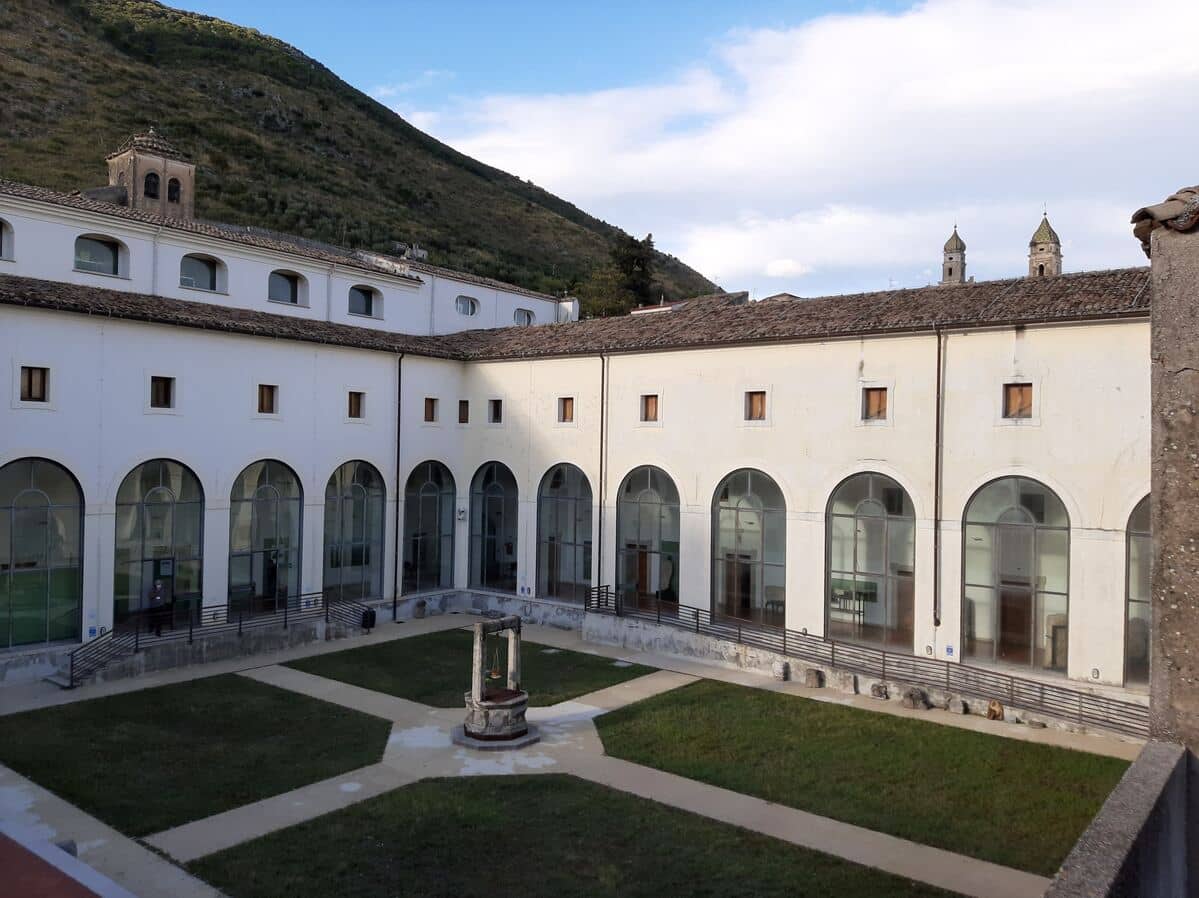It is the largest exhibition centre for Roman and medieval antiquities in the Molise region. The two floors of the museum illustrate the ancient history of the town of Venafrum, which, from an important Samnite settlement, became one of the most flourishing centres in the region in Roman times, famous in particular for its oil production.
The Archaeological Museum is housed in the seventeenth-century monastery of Santa Chiara, in the historic centre of the town, and contains finds from prehistoric to medieval times from the area. The Museum was opened to the public in 1931 with a small exhibition of archaeological material. In 1998 it reopened with a new and more extensive layout, made even more interesting by the architectural setting of the restored monastery.
The exhibition is arranged on two floors according to chronological and thematic criteria and documents the various forms of occupation of the territory in Roman times: necropolis, public works, productive settlements, the main monuments of the city. The whole exhibition contributes to showing the different aspects of public and private daily life in ancient Venafrum. In the cloister porch there is material from the necropolises that were distributed along the main access roads to the Roman town.
Architectural elements from the decoration of the Roman theatre and other structures are exhibited in the rooms, of which the two large statues of togati are noteworthy. Of particular interest is the Augustan Edict, engraved with the rules for the use of the aqueduct, drawn up in the years between 17 and 11 BC. The document contains indications on the construction methods, relations with the owners of the land crossed, the distribution of water and indicates the magistrates who were entrusted with the management and supervision of the aqueduct and who were competent in case of disputes.
The richness of Roman Venafrum is attested by the refined decorations of the monumental buildings and patrician residences: exceptionally well-preserved frescoes, mosaics and coloured marbles and above all the splendid statues, including the famous ‘Venus of Venafro’, from the 2nd century AD, which was discovered by chance in 1958 during work on the construction of a house.
The Medieval section on the second floor holds many surprises, such as the “Venafro Chess”, made over a thousand years ago and considered to be one of the oldest in Europe. In addition, the most recent wing of the exhibition houses the finds from the monastic complex of San Vincenzo al Volturno: agricultural tools, furnishings, inscriptions, jewellery, and very interesting exhibits that provide an insight into monastic life in the early Middle Ages, when Abbots Glosué and Epifanio transformed the monastery into a real monastic city and launched impressive building projects that transformed San Vincenzo al Volturno into one of the largest monasteries in Europe.
The Museum is open from Tuesday to Sunday from 8.15 to 13.45
drm-mol@beniculturali.it



